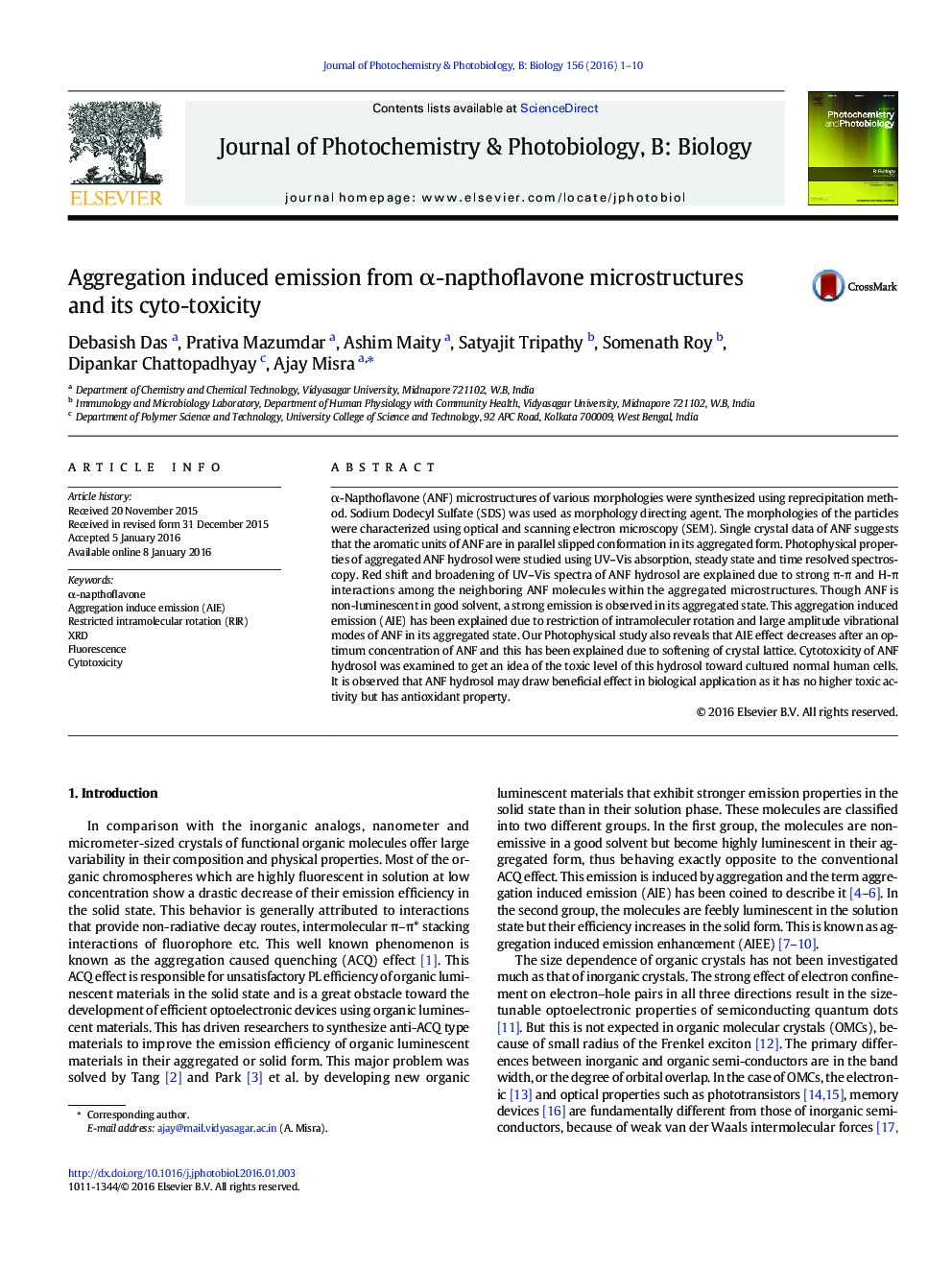| Article ID | Journal | Published Year | Pages | File Type |
|---|---|---|---|---|
| 29514 | Journal of Photochemistry and Photobiology B: Biology | 2016 | 10 Pages |
•Morphologically interesting α-Napthoflavone microcrystals are synthesized.•Crystal induced emission from α-Napthoflavone microcrystals is observed.•Microcrystals have no higher toxic activity and have good antioxidant property.
α-Napthoflavone (ANF) microstructures of various morphologies were synthesized using reprecipitation method. Sodium Dodecyl Sulfate (SDS) was used as morphology directing agent. The morphologies of the particles were characterized using optical and scanning electron microscopy (SEM). Single crystal data of ANF suggests that the aromatic units of ANF are in parallel slipped conformation in its aggregated form. Photophysical properties of aggregated ANF hydrosol were studied using UV–Vis absorption, steady state and time resolved spectroscopy. Red shift and broadening of UV–Vis spectra of ANF hydrosol are explained due to strong π-π and H-π interactions among the neighboring ANF molecules within the aggregated microstructures. Though ANF is non-luminescent in good solvent, a strong emission is observed in its aggregated state. This aggregation induced emission (AIE) has been explained due to restriction of intramoleculer rotation and large amplitude vibrational modes of ANF in its aggregated state. Our Photophysical study also reveals that AIE effect decreases after an optimum concentration of ANF and this has been explained due to softening of crystal lattice. Cytotoxicity of ANF hydrosol was examined to get an idea of the toxic level of this hydrosol toward cultured normal human cells. It is observed that ANF hydrosol may draw beneficial effect in biological application as it has no higher toxic activity but has antioxidant property.
Graphical abstractFigure optionsDownload full-size imageDownload as PowerPoint slide
